Film Washi is a French company that sources and respools unusual and often unique photographic media on consumer friendly rolls, cassettes, and even in large format. I have heard it described as the world’s smallest film company. Search Film Washi to find their products; I often get mine at Freestyle. Unfortunately due to the availability of media and the small size of the company, films are often out of stock.
Over the last few years, I have enjoyed testing many of the Washi films including Washi A (motion picture leader), F (fluorographic X-ray), D (aerial surveillance), S (Sound recording), and X (color film – could be Kodak Aerocolor 125). Overall, I’ve had good luck with each film.
What is Film Washi E?
Washi E is in a different league from all the films I have tried and it possibly has been the most challenging of them all. But that makes it even more fun, at least for me.
Washi E was designed for printed circuit boards and optimized for use with a red laser. It has no sensitivity to green at all. The roll I shot was very high in contrast with very little exposure latitude. This film is ISO 3 and comes in large format and 120 rolls. The film base is quite thick and the heaviest that I have ever used.
Camera and Exposure
I shot in bright sunlight, metering once to check if the ISO 3 reading would agree with the Sunny 16 exposure I had calculated. The meter agreed so I shot all photos at 1/25, f/4.5 in my 1958 Hasselblad Super Wide. The camera has a very wide angle lens that allowed hand holding the shots without camera shake and the ability to shoot at a wide aperture while still maintaining a quality image.
Developing
According to Washi, this film is processed like all classic RC photo papers so I developed it in Ilford Multigrade paper developer 1+14 dilution for 1.5 minutes followed by a stop bath and standard fixing.
When I pulled the reel out of the Patterson tank, I was surprised that much of the film was completely clear. Part of it is due to the transparent film base but part is just total underexposure of parts of the image.

I knew that the film was high contrast but the vast clear areas on the negatives indicated that much of the roll would be black when scanned and converted to positive images.
Results
Let’s take a detailed look at my results. I did not do any editing on most of these except cropping and straightening. The exceptions are the two vehicle pictures, editing of highlights, shadows, whites and blacks was necessary to see much of anything with these obviously underexposed pictures.
I had two places in mind after I read what little is online about the film. The top location was a cable TV satellite array and for a challenging location, a John Deer tractor dealer to shoot some of their green tractors. (Remember this film has no green sensitivity.) I caught some other locations in between and the results were variable from stunning to horrible.
At the satellite array, you can see that getting light, dark, and mid-tones is a challenge and seemingly impossible to get at the same frame.
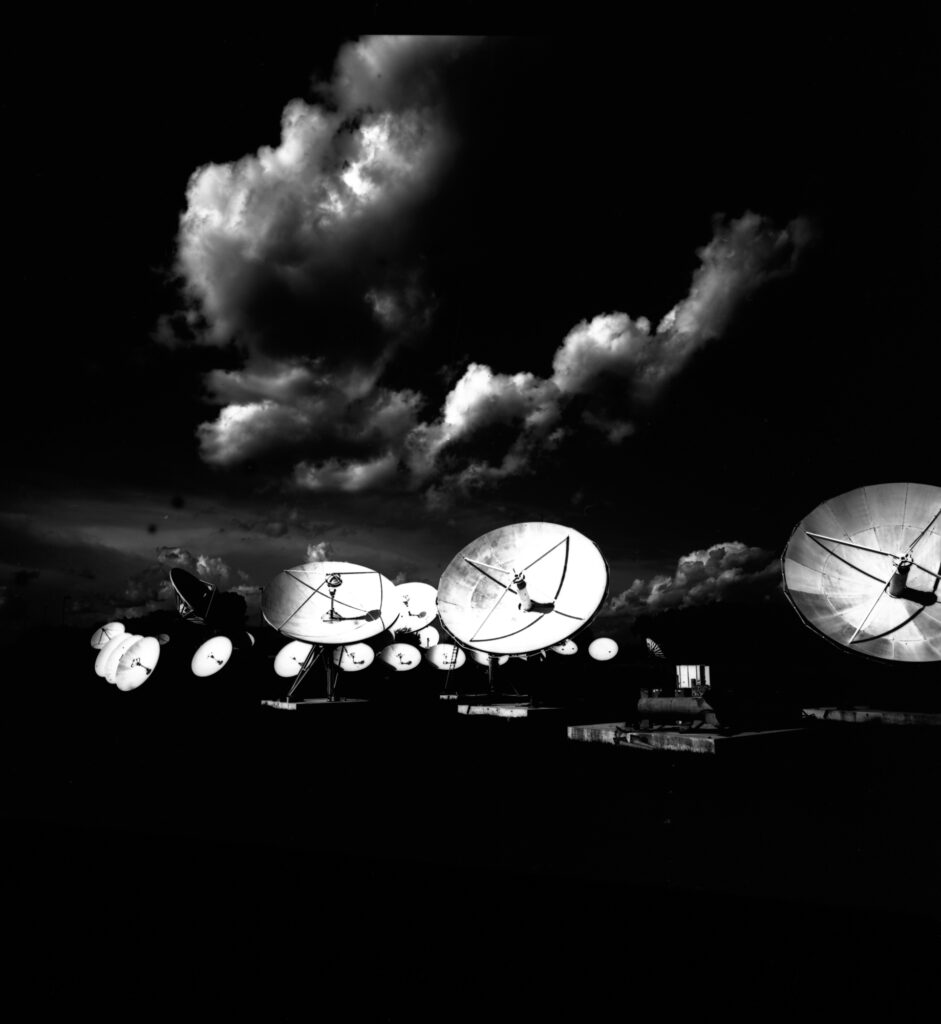
I put an image of the negative for this photo for comparison and just for fun. I think it is a neat look.
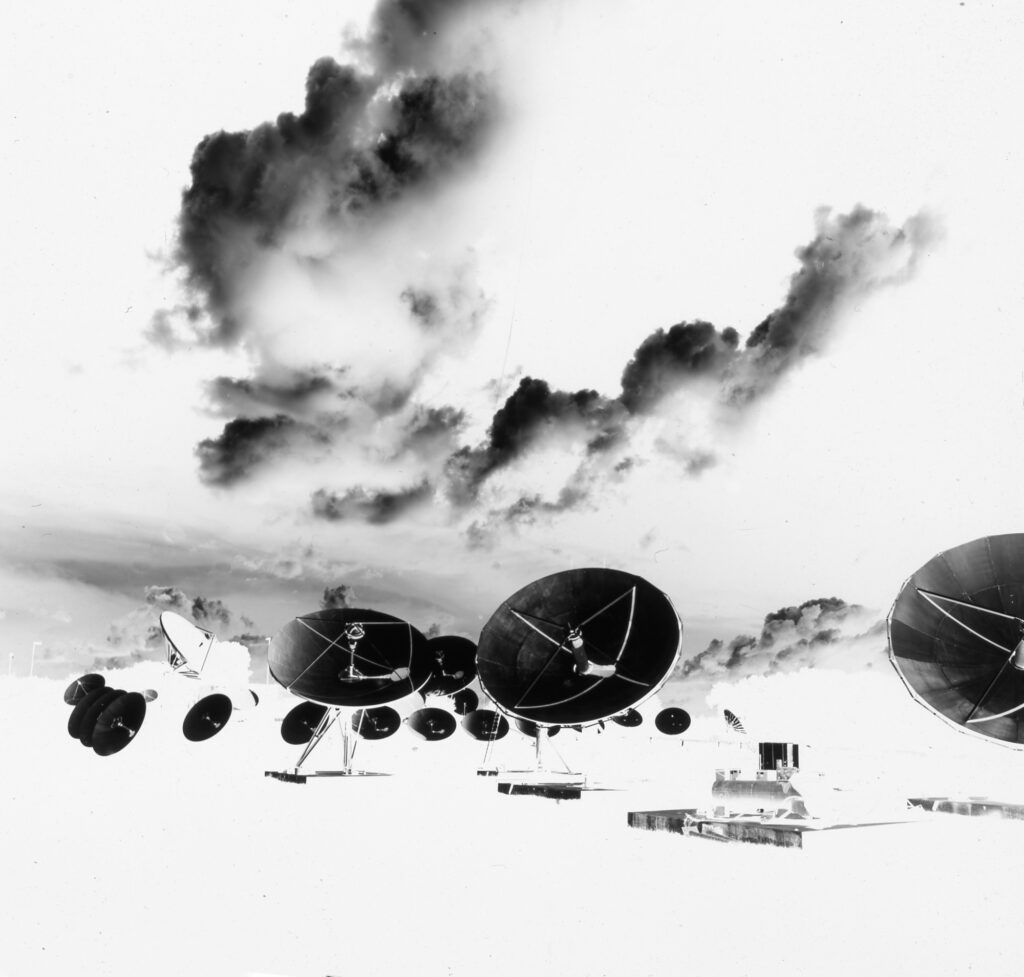
Here are two more views of the array. They look more like they were captured in bright moonlight rather than bright sunlight.
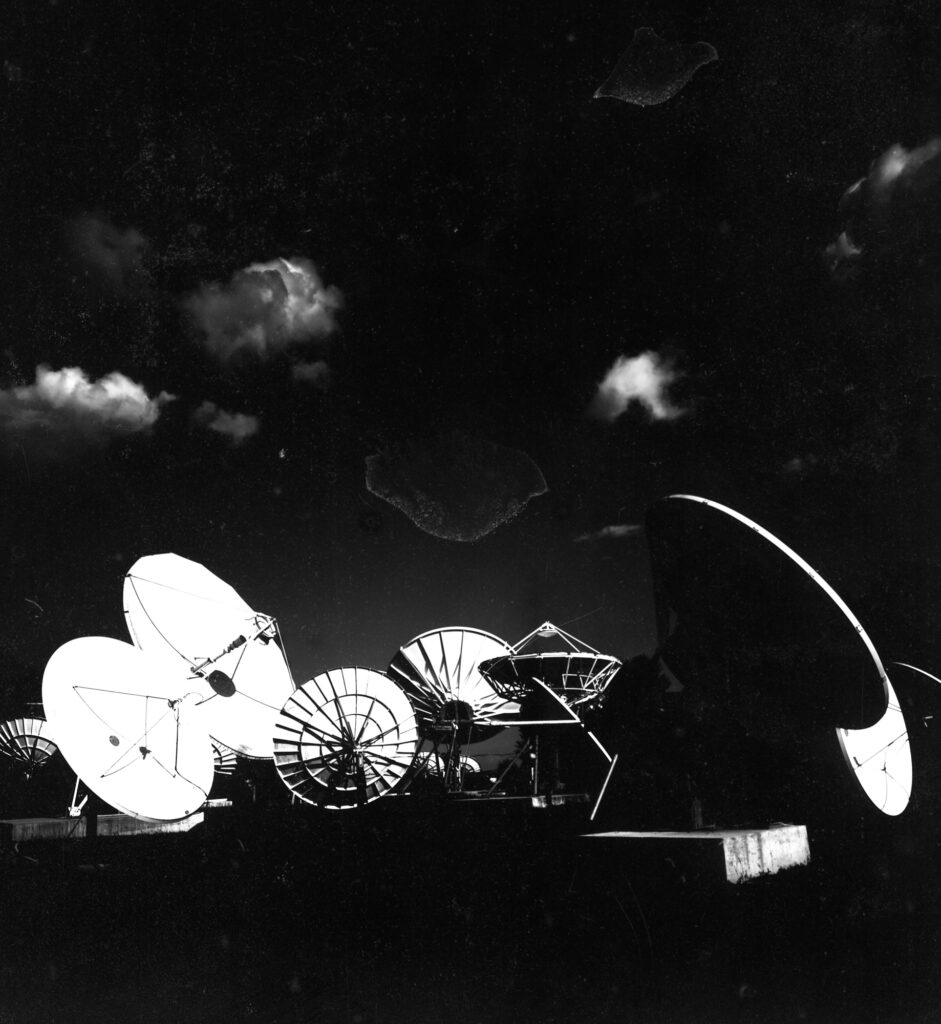
The green trees mixed with the array showed up as silhouettes because of the lack of green sensitivity.
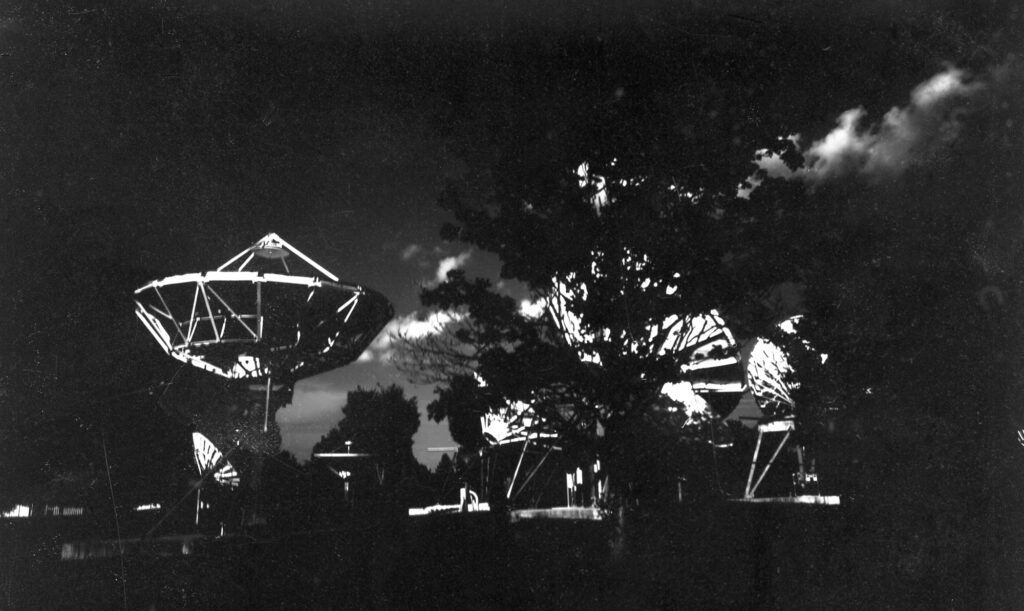
The next photo was from the middle of the roll and the results were in the middle, too. Since it is a railroad depot in a landscape, the grass and trees just disappear into the dark.
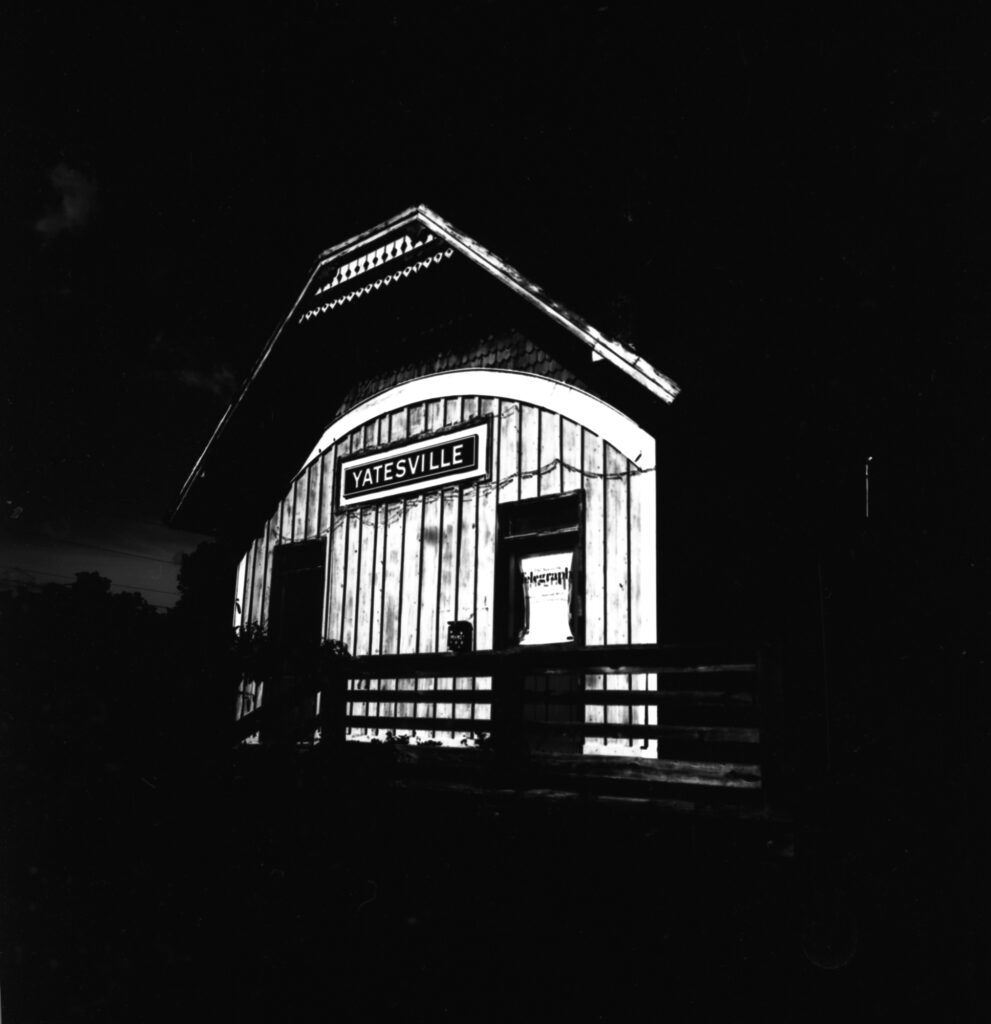
Now we are headed downhill with the results. This scene was at an old cotton gin with abandoned vehicles parked out front. I had poor luck getting detail with this scene except for a decent view of the white car. I thought the yellow bulldozer would show up a little better.
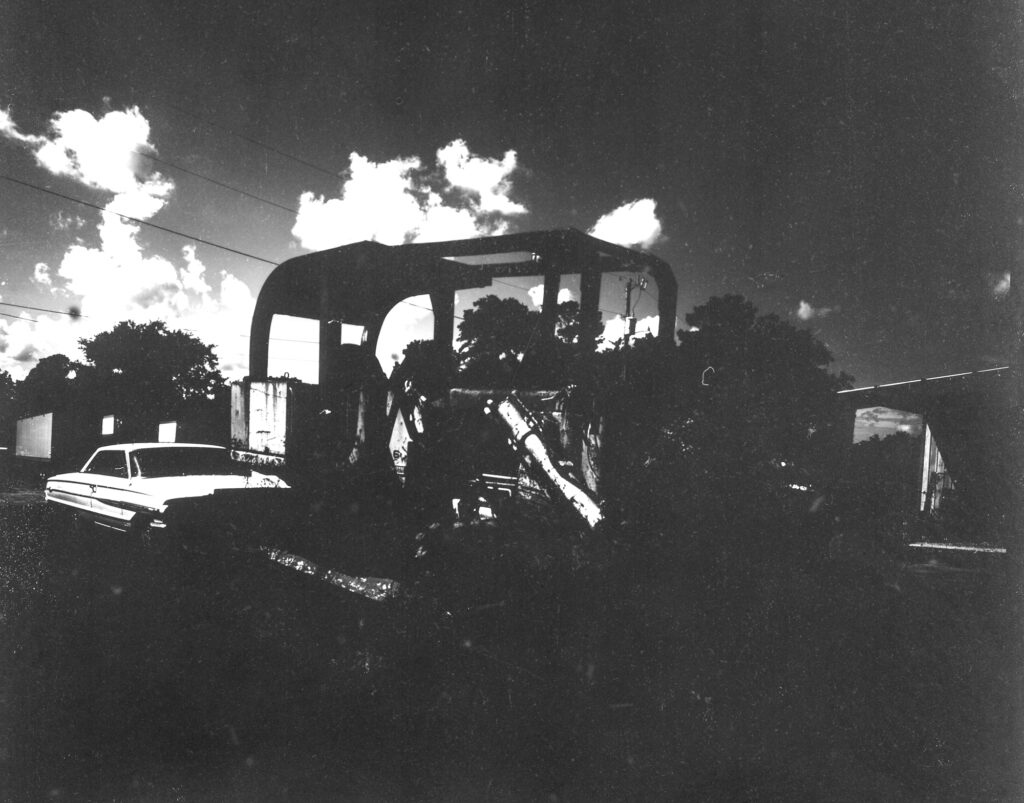
The next shot was taken at the same time as the one above. I took it with my Nikon 35Ti camera using Santacolor 100 film.
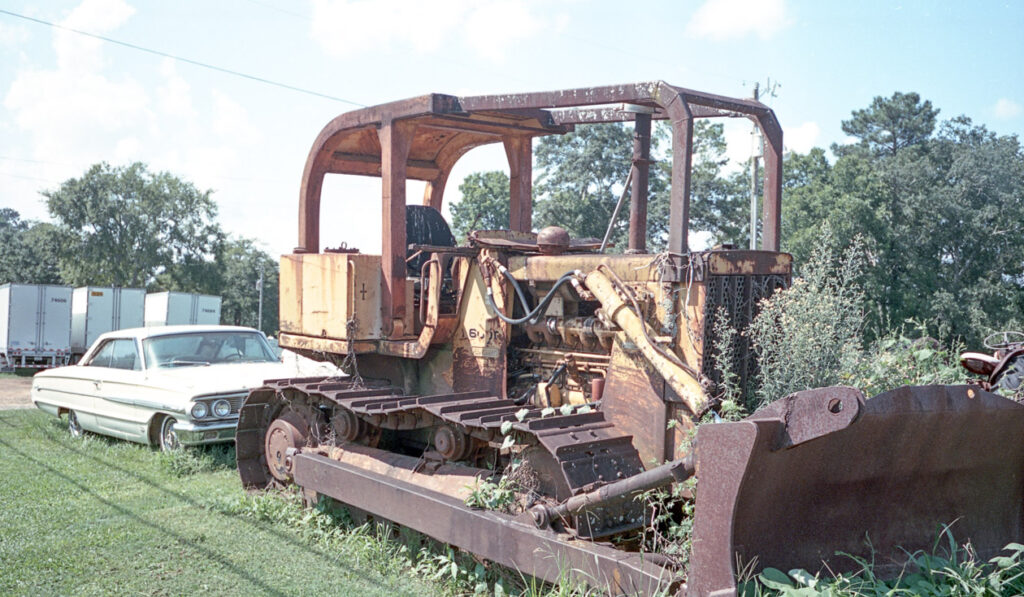
Now on to the the green tractors on the green grass in Barnesville, GA. I expected the worst and I really got it. This was the best of three shots. You might think all the tractors and maybe everything but the clouds were green from the darkness.
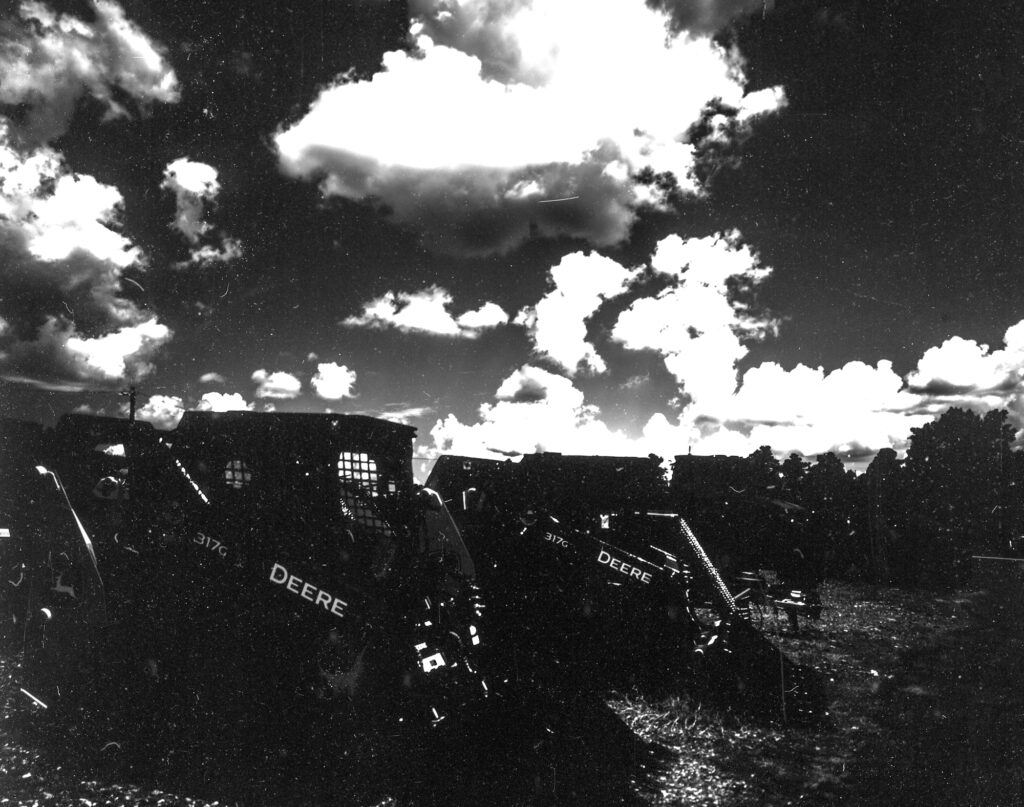
But the loaders in the foreground are not green but bright yellow. This was shot with my Pentax 17 on Kodak Portra 160 film.
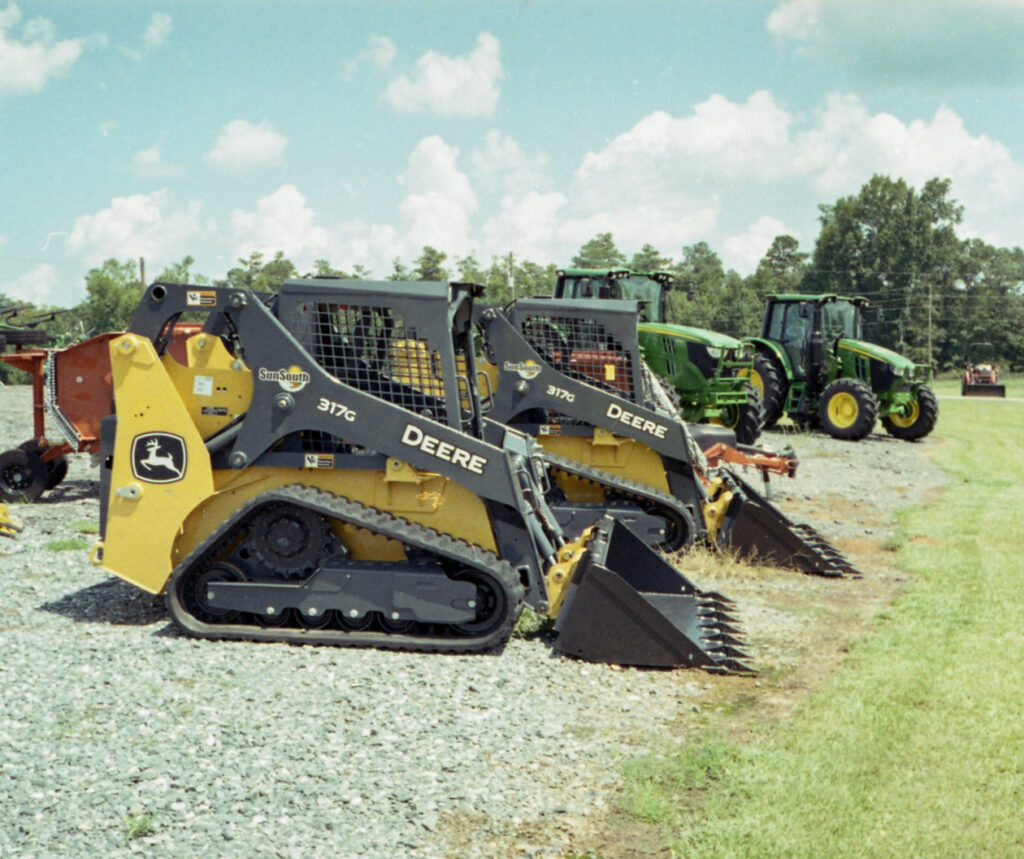
You may agree the film is a challenge to shoot and often doesn’t work as expected. Again, every photo was shot in bright sunlight. Things were puzzling.
We will finish with my favorite satellite dish and you can make some comparisons.
We will start with the negative
.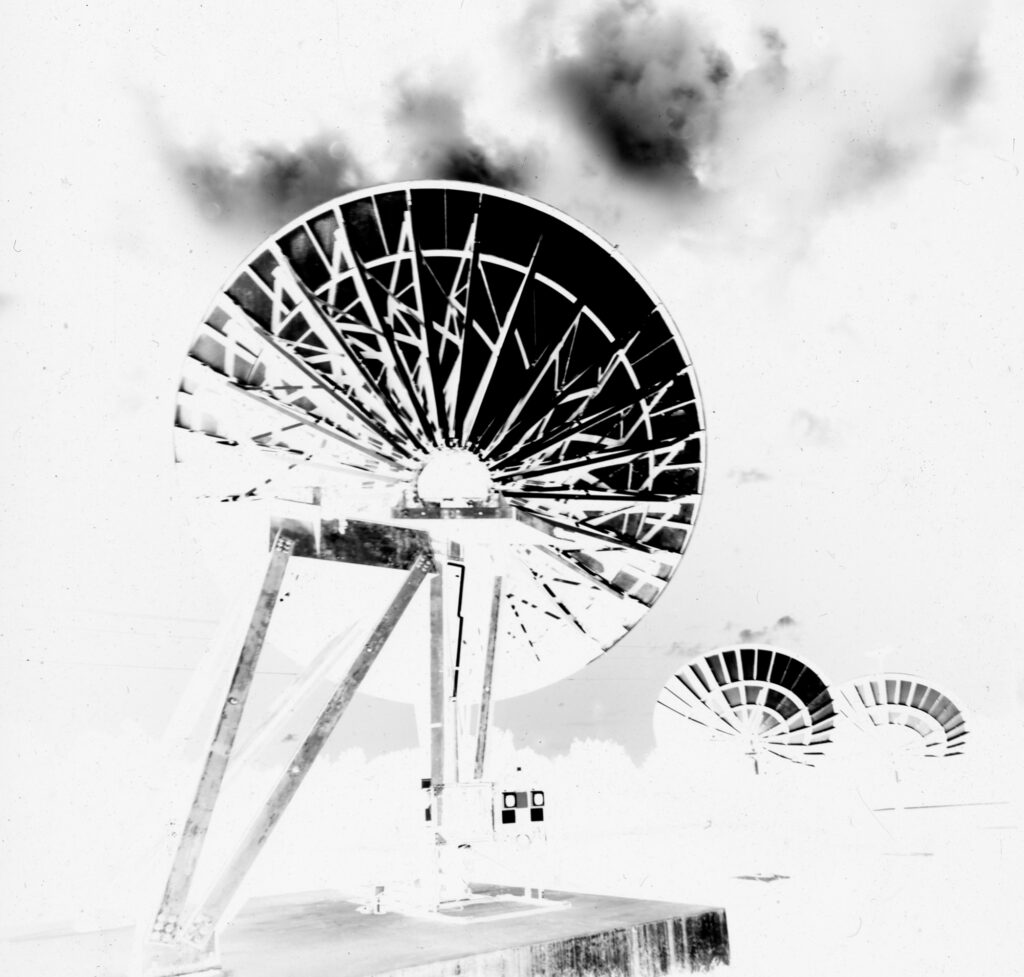
and now check out the scanned result. I really like this one.
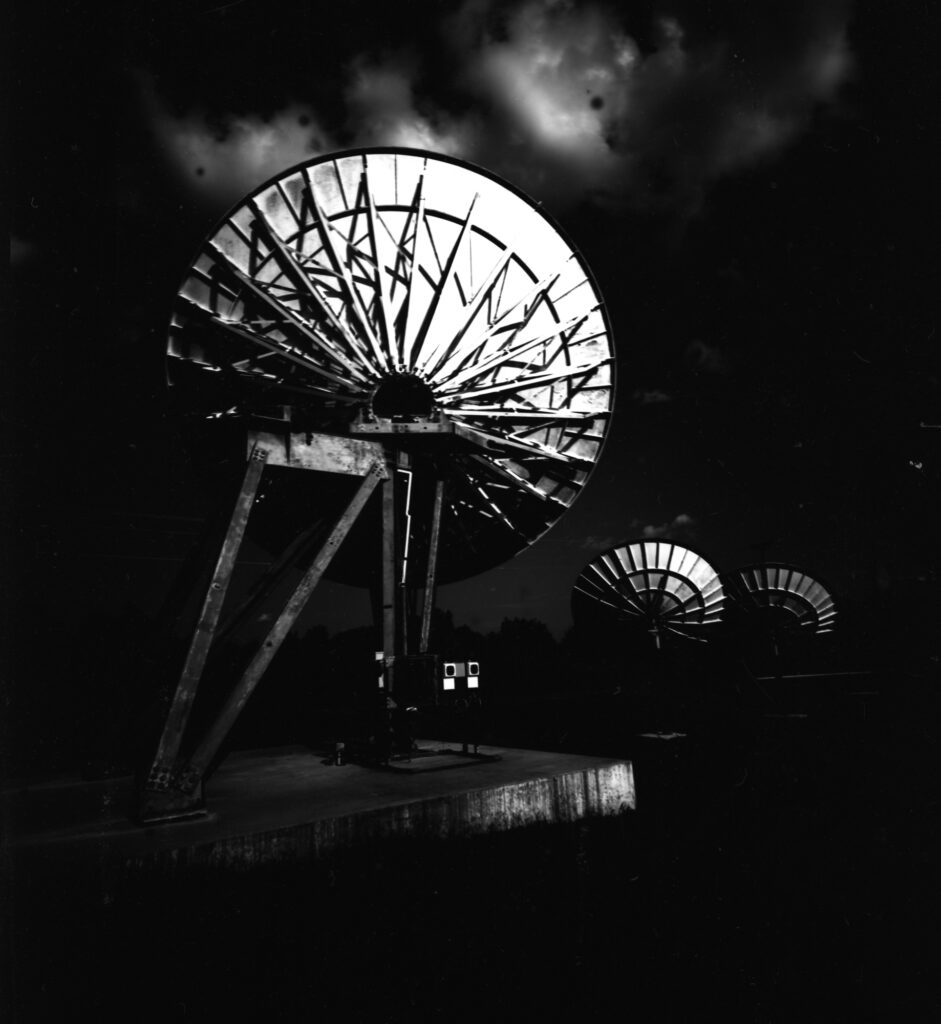
If you would like to see this beauty with a more typical film, the next image was on Foma 400 film with a Woca (Holga) 120GF.
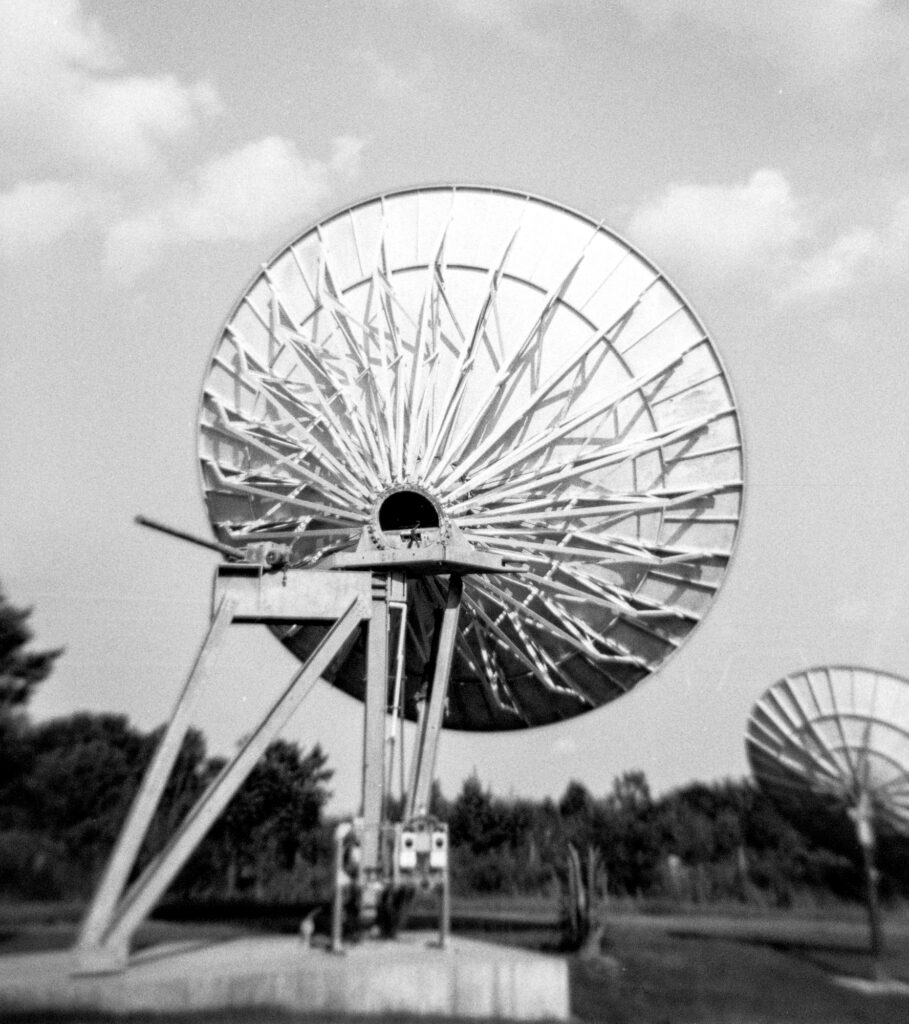
I’ve learned a lot and am happy that I have another roll to shoot and hopefully end up with better overall results.
If you want a real challenge and maybe have some fun on the way, give Washi E a try.
Share this post:
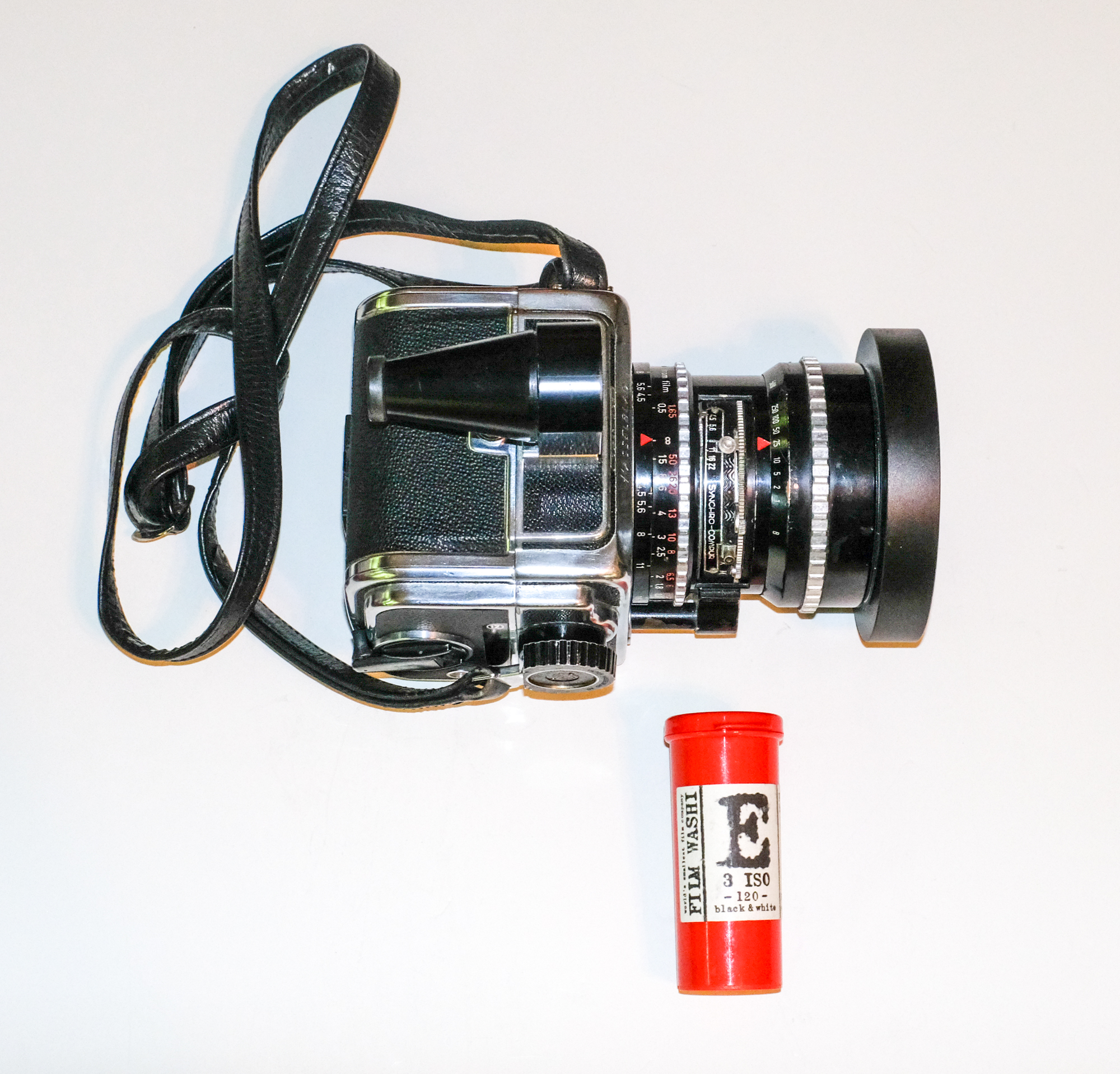
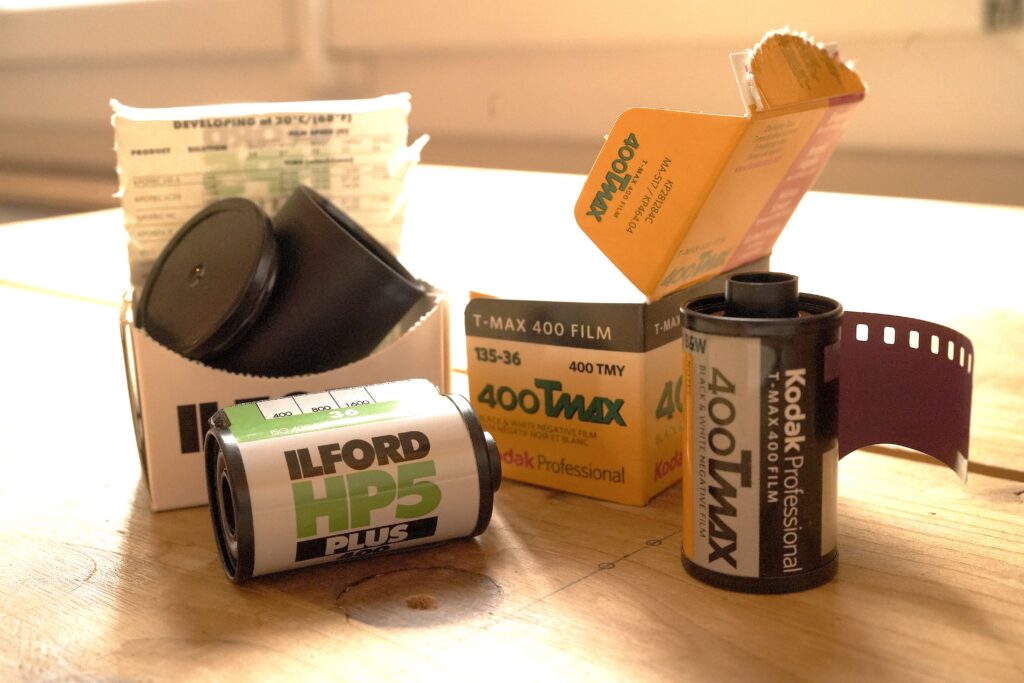
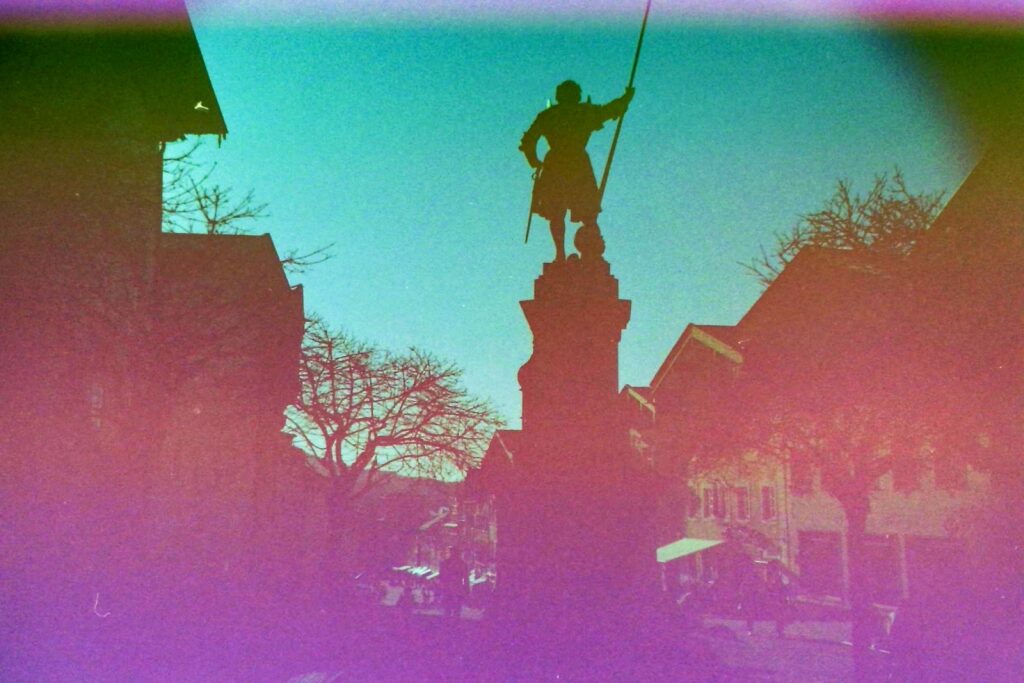
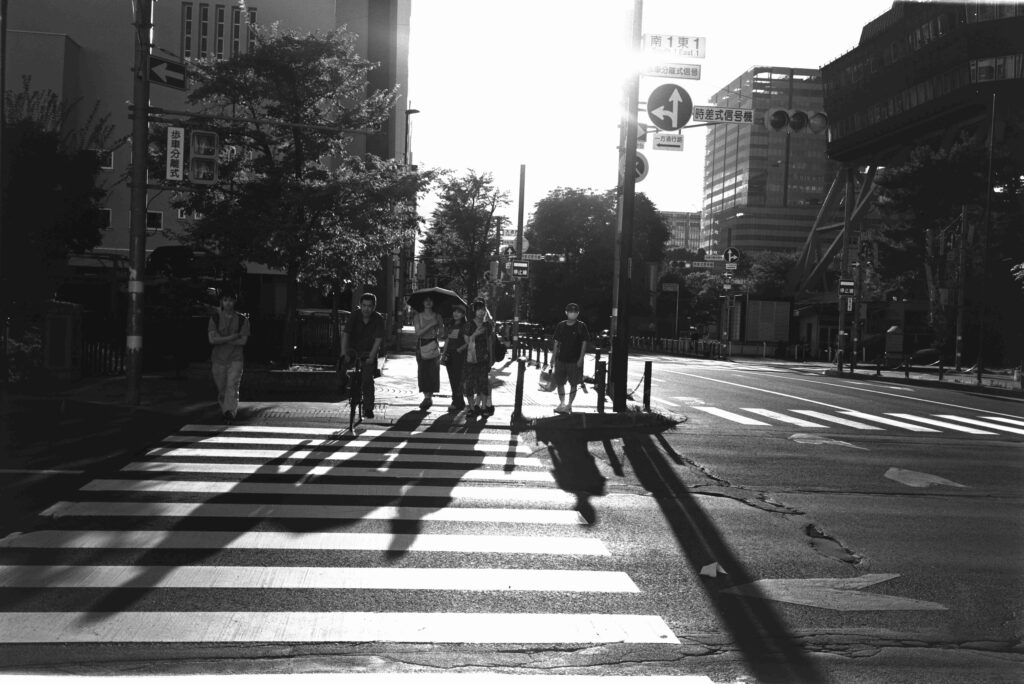
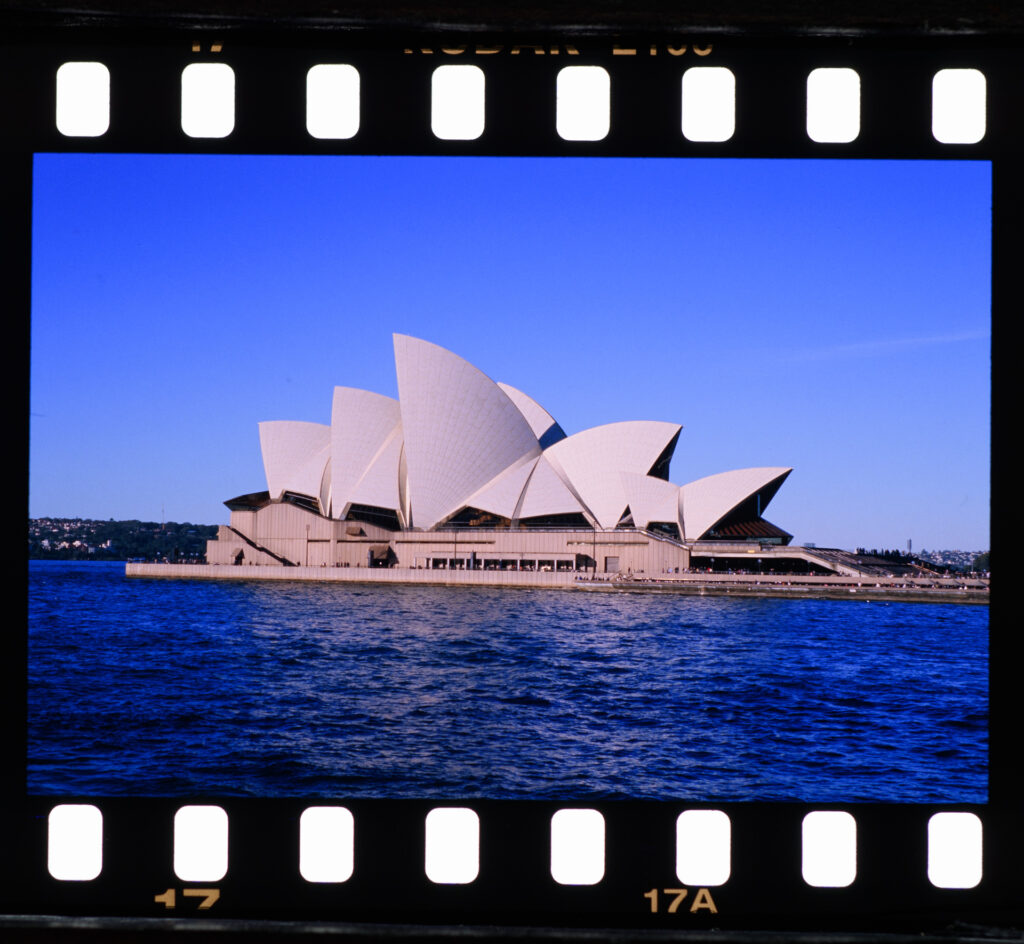




Comments
Peter Kay on Washi E – A Very Peculiar Film
Comment posted: 27/10/2024
Comment posted: 27/10/2024
Jeffery Luhn on Washi E – A Very Peculiar Film
Comment posted: 27/10/2024
Those dishes are right out of a spooky sci-fi film! I love those shots! Of course I rue the day I sold both Super Wide cameras. One was a fairly new model (1974) that I sold for a friend. I SHOULD HAVE BOUGHT IT FOR MYSELF!!!
I am interested in doing some high contrast shooting. You have pushed me into action. I think I'll try Tech Pan or some other emulsion with an easier path. You are brave to go into uncharted waters.
Jeffery
Comment posted: 27/10/2024
Tony Warren on Washi E – A Very Peculiar Film
Comment posted: 27/10/2024
Comment posted: 27/10/2024
Nathan S on Washi E – A Very Peculiar Film
Comment posted: 28/10/2024
Comment posted: 28/10/2024
Alex Hiley on Washi E – A Very Peculiar Film
Comment posted: 03/11/2024
The extreme soot & whitewash is similar to what I got using Microfilm (1974 expiry Kodak 5459, apparently last produced in 1969 ! ). If I ever try that again then I'll make sure to include some nice white clouds. I certainly won't be using it for wedding photos ....
Comment posted: 03/11/2024